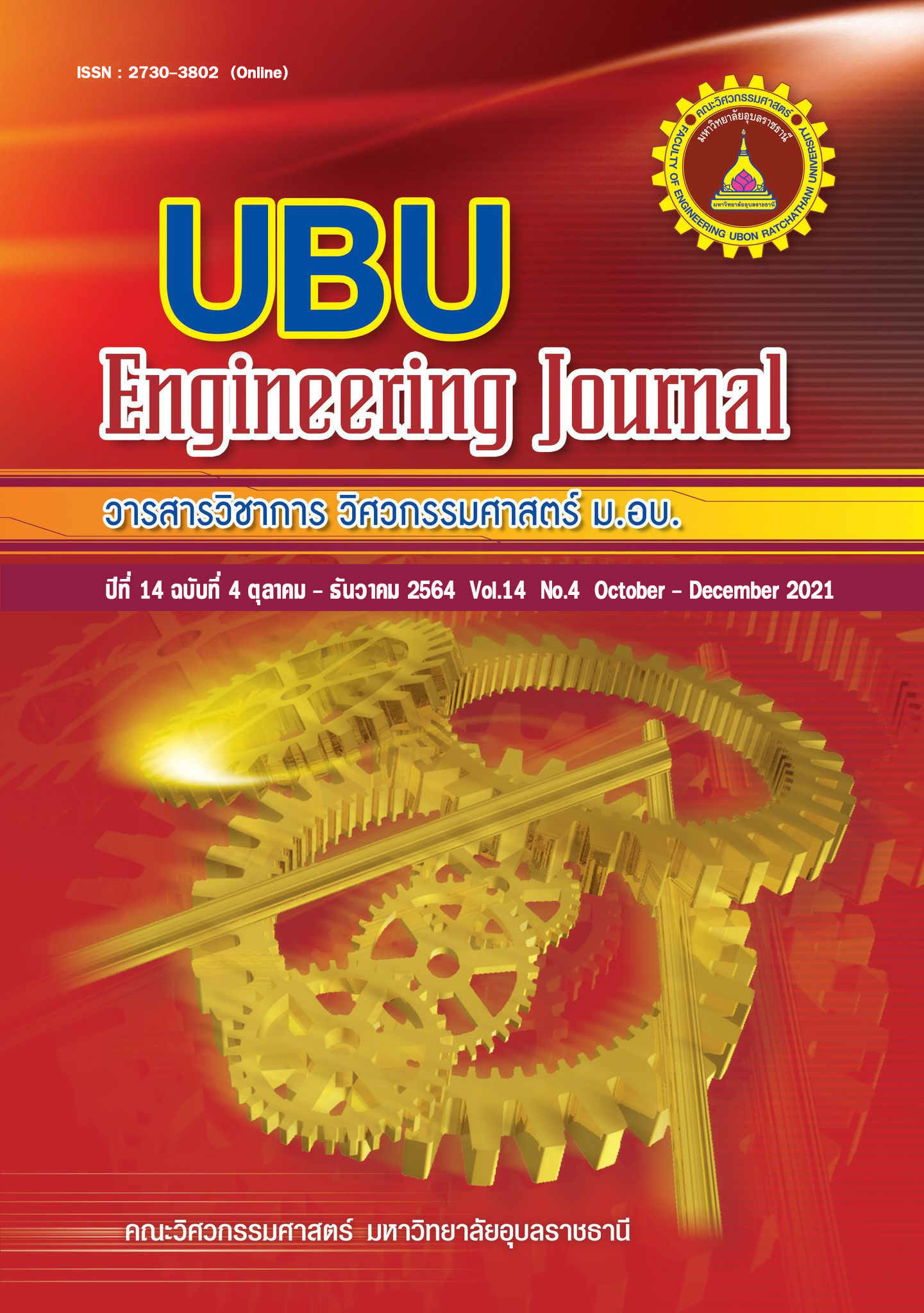Estimating time-varying queue length at signalized intersection by using color-coded traffic on Google Maps
Main Article Content
Abstract
Traffic jam, at a signalized intersection, is a common problem in urban areas that emergency vehicles such as ambulances are usually stuck in a queue. Thus, emergency medical transportation may be impeded leading to unnecessary damage or death. This research aims to develop an intelligent traffic signal system that prioritizes emergency vehicles. The main focus is developing a method for measuring the time-varying queue length at a signalized intersection, which is an integral part of the system's operation. In the past, most of research analyzed the queue lengths by using traffic detectors, but they have rarely been installed and used in Thailand In this paper, we present a new approach to estimate the queue length that does not need a traffic detector; instead, it utilized color-coded traffic data from Google Maps to predict the queue length based on three different methods: which are Multiple Linear Regression, Random Forest, and The Mean method. The study found that the length of the colored bars displayed on Google Maps can, to some extent, provide a good approximation of the actual queue length trend, and are more correlated with two methods especially in rush hours with heavy traffic. The Random Forest, among three methods, yields the best performance in predicting the queue length when compared to the other two methods.
Article Details
References
[2] Lighthill MJ, Whitham GB. On kinematic waves II. A theory of traffic flow on long crowded roads. Proceedings of the Royal Society A: Mathematical, Physical and Engineering Sciences. 1955;229(1178): 317–345.
[3] Richards PJ. Shock waves on the highway. In: Reilly, W. Highway Capacity Manual 2000. 4th ed. Washington, DC: National Research Council; 1956. p. 42–51.
[4] Stephanopoulos G, Michalopoulos PG. Modelling and analysis of traffic queue dynamics at signalized intersections. Transportation Research Part A. 1979;13(5): 295-307.
[5] Henry X. LIU, Xinkai WU, Wenteng MA, et al. Real-time Queue Length Estimation for Congested Signalized Intersections. Transportation Research Part C. 2009;17: 412-427.
[6] Webster FV, Cobbe BM. Traffic signals. London: Her Majesty’s Stationery Office; 1966.
[7] Cronje WB. Analysis of existing formulas for delay, overflow, and stops. Transportation Research. 1983;905: 89–93.
[8] Balke K, Charara H, Parker R. Development of a Traffic Signal Performance Measurement System (TSPMS). Texas (Austin): Department of Transportation Research and Technology Implementation Office 2005.
[9] Ban XJ, Hao P, Sun Z. Real time queue length estimation for signalized intersections using travel times from mobile sensors. Transportation Research Part C. 2011;19(6): 1133-1156.
[10] Wu A, Yang X. Real-time queue length estimation of signalized intersections based on RFID data. Procedia-Social and Behavioral Sciences. 2013;96: 1477-1484.
[11] อภิรักษ์ บุตรละ. การประยุกต์ใช้ Google Map ในการพัฒนาระบบการคำนวณค่ารถ taxi ในเขตพื้นที่กรุงเทพมหานครและปริมณฑล. วิทยานิพนธ์วิทยาศาสตรมหาบัณฑิต บัณฑิตวิทยาลัย มหาวิทยาลัยกรุงเทพ 2553.
[12] นันทชัย กานตานันทะ. การพยากรณ์ด้วยวิธีการพยากรณ์เชิงสาเหตุ. วารสารวิศวกรรมศาสตร์ (ISSN: 1906-3636). 2555;4(1): 35-48.
[13] พัฒนพงษ์ ดลรัตน์. การเปรียบเทียบประสิทธิภาพของแบบจำลองในการพยากรณ์ความสำเร็จการศึกษาของนักเรียนระดับประกาศนียบัตรวิชาชีพ. วารสารวิทยาศาสตร์และเทคโนโลยี. 2560;37(3): 380-388.
[14] Nicholas S. Biostar Bioinformatics Explained. Available from: https://www.biostars.org/p/
86981/ [Accessed: 04th June 2020].
[15] ขนิษฐา ดีสุบิน. การพัฒนาตัวแบบการพยากรณ์ความถนัดทางการเรียนตามทฤษฎี 4 MAT โดยการวิเคราะห์ด้วยวิธีต้นไม้. วารสารนวัตกรรมการเรียนรู้. 2560;2(1): 43

